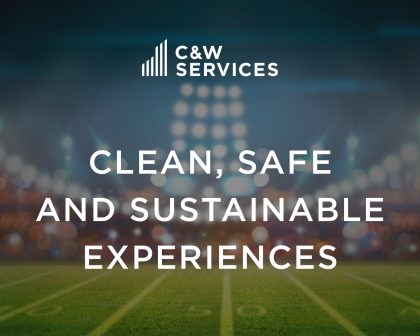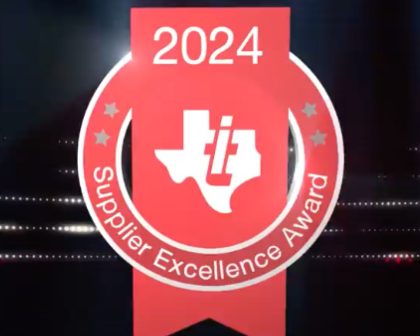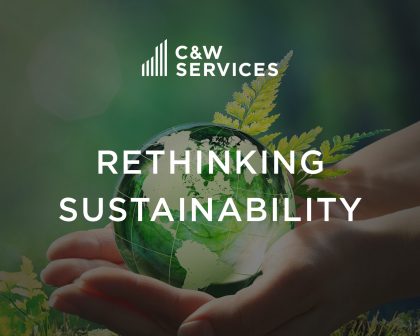
The Facility Services industry, specifically in Manufacturing, has faced many challenges.
With a growing remote work environment, the widening gap of skills trades, and an inevitable push toward technology to fill those gaps, it’s no wonder that our everyday processes, employee retention, and sustainment efforts are taking a beating. With all the creative solutions thrown at us daily, perhaps the simplest solution is the best. And as one of my colleagues, Ali Mohammed, likes to say, “Sometimes, we just need the basics, not new technology.” This is where 5S comes in.
5S is a foundation stone for our C&W Services Productive Maintenance (CPM) program, integral to delivering quality service excellence for our clients. Integrating 5S practices into our service excellence model of People, Processes, and Performance is not just beneficial, it’s imperative. In my experience, it is essential to address the two biggest challenges every facility and maintenance organization faces today: disruption and continuity.
Disruption and Lack of Continuity
What’s one thing that ails us daily, whether at work or home? Think about it. What is the most frustrating and annoying thing that causes angst no matter what you’re doing? Whether it’s your car breaking down, your computer being slow, or your family/friends pestering you with calls while you are intensely focused on a project, nothing causes more problems than disruptions. And this is just on a personal level. How about at work, where we experience multiple disruptions during a long day? The funny thing about disruption is it motivates us to think about preventative actions or ways to minimize its negative impact. This leads us to create some form of a continuity plan so that we have a backup when the disruption occurs.
Let’s relate this to what the manufacturing industry and our clients are facing:
- Low employee retention because of competitive pay or experienced employees retiring or leaving.
- As a result of #1, more new hires need training in an already stressful workday.
- This disruption to our daily processes and maintenance execution also impacts our facilities, equipment, and employees.
- Eventually (or almost immediately), we see the negative impacts this has on our productivity and sustainment efforts.
So, how can 5S help address these issues, mitigate disruption, and establish continuity? Here are just some of the ways.
Addressing Disruption
Processes: Implementing 5S leads to developing a clear and streamlined workflow. For example, a manufacturing facility might use 5S to reorganize its production line, resulting in fewer errors and delays and thereby reducing process disruptions. In 5S, the ‘Standardize’ and ‘Sustain’ principles help establish a consistent process.
Maintenance: 5S can significantly improve maintenance efficiency. By organizing tools and parts systematically and implementing regular cleanliness and preventative maintenance routines, maintenance teams can quickly address issues before they lead to significant downtime, thus minimizing disruption in operations and asset performance. In 5S, the ‘Sort’ and ‘Set in Order’ principles can make maintenance activities more predictable and less intrusive.
Production: An inevitable by-product of reducing disruptions in our daily processes and maintenance is that we enhance our productivity. Applying 5S can drastically reduce clutter and confusion while improving efficiency and effectiveness. This leads to smoother productivity and fewer stoppages, directly addressing disruptions and maintaining optimal work conditions.
When utilizing 5S to address the disruptions caused by low retention, inexperienced personnel, and crumbling sustainment efforts, we inevitably (by proxy) cultivate continuity.
Enhancing Continuity
Personnel Retention: A well-organized and efficient workplace, achieved through 5S, enhances employee satisfaction, reduces stress, and enhances safety. Research has proven that a clean, efficient, and organized work environment leads to higher retention rates, as employees are more likely to stay in an environment where they can perform their duties effectively and safely. This has tremendous staying power (pun intended) because the longer employees stay, the easier continuity can be established.
New Hire Training: With 5S, new employees are introduced to a workplace where everything has a place, and standard procedures are clear and documented. A structured, clean, and efficient environment creates an effective onboarding process where the learning experience is straightforward, ensuring quicker and more quality training. Research has also taught us that an effective onboarding program is critical to employee retention. When new hires want to stay, that means less effort (re)training new hires and more continuity.
Sustainment: Finally, the inevitable by-product of enhancing continuity is the reward of an executable, long-term sustainment strategy. 5S encourages a culture of continuous improvement, consistency, and continuity. I mean, one of the principles of 5S is literally “Sustain!”—therefore, by enhancing employee experience and retention, those employees will eventually stay long enough to be vested in our 5S efforts. This leads to 1) improving the organization’s operations, 2) contributing to changing business needs and technologies, and 3) ensuring long-term sustainability and continuity.
It’s about our People, Processes, and Performance
Integrating 5S into C&W Services is not just a strategy; it’s necessary for thriving in today’s fast-paced, disruption-prone industry. By embracing 5S, we address the critical issues of disruption and continuity head-on, paving the way for a more efficient, resilient, and successful organization. This foundation stone of our CPM Program optimizes our operations and aligns with our commitment to People, Process, and Performance to deliver quality Service Excellence to our accounts.
For questions on this material, please contact George Alvarado (george.alvarado@cwservices.com).).




